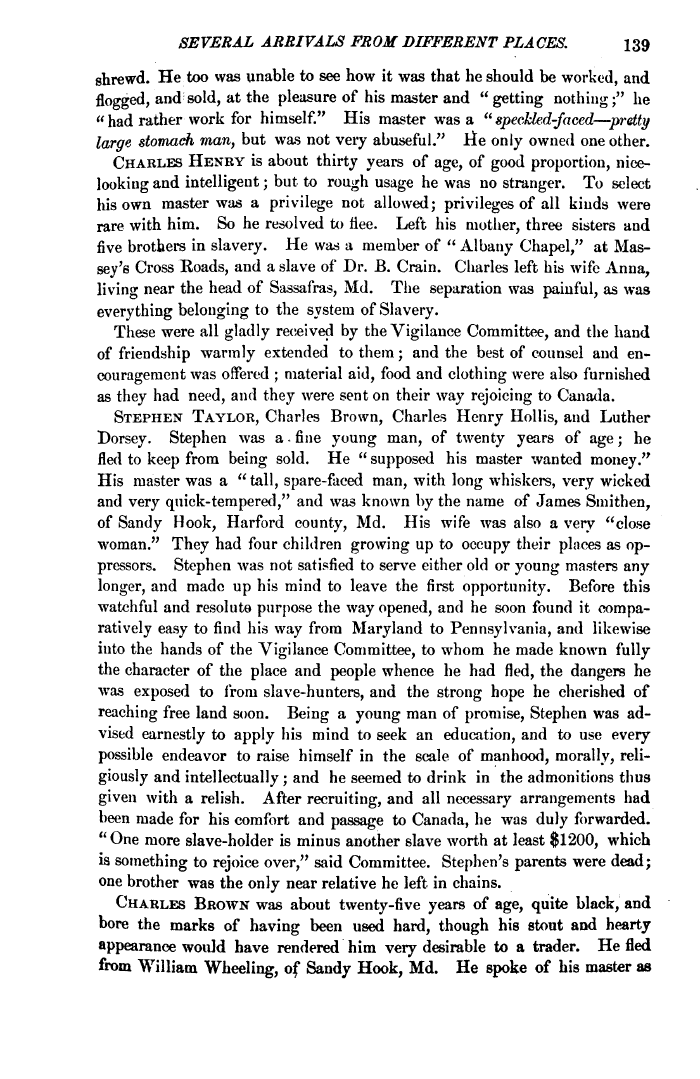 |
||||
 |
||||
| SEVERAL ARRIVALS FROM DIFFERENT PLACES. 139 shrewd. He too was unable to see how it was that he should be worked, and flogged, and sold, at the pleasure of his master and "getting nothing;" he "had rather work for himself." His master was a "speckled-faced—pretty large stomach man, but was not very abuseful." lie only owned one other. CHARLES HENRY is about thirty years of age, of good proportion, nice-looking and intelligent; but to rough usage he was no stranger. To select his own master was a privilege not allowed; privileges of all kinds were rare with him. So he resolved to flee. Left his mother, three sisters and five brothers in slavery. He was a member of " Albany Chapel," at Mas-sey's Cross Roads, and a slave of Dr. B. Grain. Charles left his wife Anna, living near the head of Sassafras, Md. The separation was painful, as was everything belonging to the system of Slavery. These were all gladly received by the Vigilance Committee, and the hand of friendship warmly extended to them; and the best of counsel and encouragement was offered ; material aid, food and clothing were also furnished as they had need, and they were sent on their way rejoicing to Canada. STEPHEN TAYLOR, Charles Brown, Charles Henry Hollis, and Luther Dorsey. Stephen was a. fine young man, of twenty years of age; he fled to keep from being sold. He " supposed his master wanted money." His master was a " tall, spare-faced man, with long whiskers, very wicked and very quick-tempered," and was known by the name of James Smithen, of Sandy Hook, Harford county, Md. His wife was also a very "close woman." They had four children growing up to occupy their places as oppressors. Stephen was not satisfied to serve either old or young masters any longer, and made up his mind to leave the first opportunity. Before this watchful and resolute purpose the way opened, and he soon found it comparatively easy to find his way from Maryland to Pennsylvania, and likewise into the hands of the Vigilance Committee, to whom he made known fully the character of the place and people whence he had fled, the dangers he was exposed to from slave-hunters, and the strong hope he cherished of reaching free land soon. Being a young man of promise, Stephen was advised earnestly to apply his mind to seek an education, and to use every possible endeavor to raise himself in the scale of manhood, morally, religiously and intellectually; and he seemed to drink in the admonitions thus given with a relish. After recruiting, and all necessary arrangements had been made for his comfort and passage to Canada, he was duly forwarded. "One more slave-holder is minus another slave worth at least $1200, which is something to rejoice over," said Committee. Stephen's parents were dead; one brother was the only near relative he left in chains. CHARLES BROWN was about twenty-five years of age, quite black, and bore the marks of having been used hard, though his stout and hearty appearance would have rendered him very desirable to a trader. He fled from William Wheeling, of Sandy Hook, Md. He spoke of his master as |